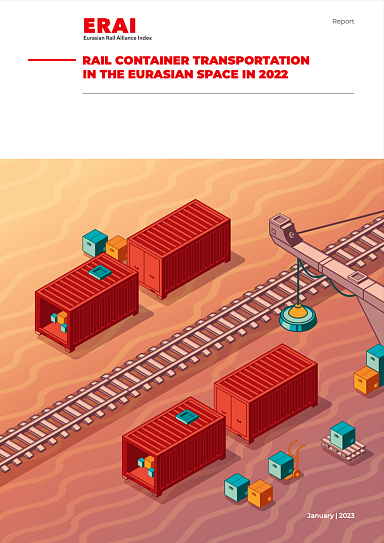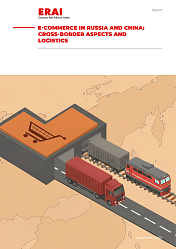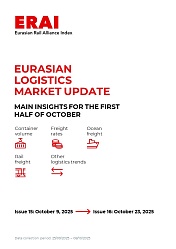Firstly, the aggravation of the international political environment, driven by the conflict in Ukraine, has radically increased the risk of sanctions and complicated the operating environment of the Eurasian railway route passing through Belarus, Russia and Kazakhstan. Secondly, circumstances once favorable for the modal shift towards rail, associated with the high cost of sea freight, have come to an end. In November 2022, the composite WCI reading, which illustrating the cost of shipping goods in containers from Southeast Asian countries to Europe, fell below the levels of the ERAI index, an indicator of the cost of transportation by rail across the territory of the EAEU.
Despite extremely turbulent external conditions, the total volume of container traffic along the Eurasian railway route in 2022 amounted to 681,200 TEU, only 1.6% less than last year. The key factor in maintaining volumes was the growth in freight traffic in other relatively new segments, which compensated for a 35% volume drop in the main segment, namely the China — Europe — China transit. Thus, Eurasian container railway transportation has demonstrated the ability to adapt — despite the prevailing circumstances.
The main transportation indicators, such as speed and transit time, the average number of container trains and train occupancy reflect the stable operation of the route. The share of empty containers has also hit its lowest point in the history of the route — an average of 4%. Such data confirms that the expertise accumulated over the years, as well as established transit processes and relationships with key stakeholders, have allowed the Eurasian route to maintain its key competitive advantage — the quality of services provided.
The average transit time in the China — Europe — China service has decreased to 6.69 days, and the average speed of trains has increased to 816 km/day. Average train occupancy remained at 2021 levels at 117 TEU. The share of loaded containers reached 96%, including 89.4% in China- bound trains. Thus, the Eurasian railway route continues to maintain stable operations, gradually improving the quality component of transportation.
In 2022, the diversification of the cargo base continued. Electronics, mechanical equipment and automotive equipment, the historical cargo backbone in China — Europe — China services, remained the core goods for transportation, but their combined share in container traffic has decreased from 45.2% in 2021 to 39.6% in 2022. However, the continued deterioration of the EU trade balance with China should be noted, which creates difficulties for balancing cargo flows.
In 2022, the Eurasian railway route overcame unique challenges and showed great resilience to stress. Consequently, the share of the route on the China — Europe — China trade surged to 89.3%, showing a rather moderate rate of decline comparatively to other railway corridors that proceed via the borders between Mongolia, Russia and China. In general, it can be stated that due to the flexibility and ability to adapt to the new reality in which the entire transport and logistics sector of Russia, Kazakhstan and Belarus found itself, the Eurasian railway route has retained its role and importance as the most important land link connecting China, the EAEU and Europe.





